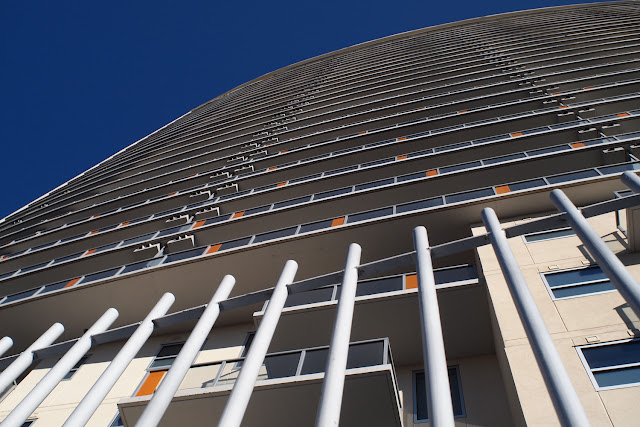I met Noellia six years ago. She answered a casting call and we (the ad agency and I) used her in an ad campaign for the Austin Chamber of Commerce. She was eighteen at the time. When I embarked on my first lighting book I needed a patient and attractive person to sit still for lots and lots of the example shots. She is the model on the front cover of my Photograhic Lighting Equipment book as well. Noellia is an accomplished theatrical actor and she's been in New York City for the last year. (Maybe that's why I didn't get any photography books done in 2010.....). But she came back for the holidays and I convinced her to come by the studio and help me with illustrations for my LED project. We worked for six hours today and got lots of stuff done. The photo above is something I selected pretty much at random from the horde of thumbnails skating across the Lightroom window at the end of the day.
I used a Canon 5Dmk2 with an 85mm 1.8 for most of the day but I thought I'd throw some 60D shots in the mix just to have a real world comparison. The 60D was equipped with the 70-200mm f4 L (non-IS) lens. I used the tripod collar on the zoom and threw the whole rig onto my wooden tripod. I shot wide open at 1/50th of a second @ 800 ISO. The actual focal length was 126mm which is pretty darn long for the APS-C format. The image was lit with three sets of lights and a really big scrim.
First up is the main light: Two 500 bulb LED fixtures and one 1,000 bulb LED fixture pushed light thru a six foot by six foot Photoflex light diffuser. The diffuser is mostly forward of Noellia's position and over to the left. My camera is actually looking thru the edge of the fabric and the light stand. It's a big wash of light and one of my favorite ways to light people.
I have one 500 bulb LED fixture illuminating the background, which is a gray painted wall in the studio. I've turned off one bank of lights so I guess I was only using 375 bulbs directly into the wall.......
Finally, there's a little 183 bulb panel over to the back right of the set that throwing some obviously ineffective backlight into the mix. It's a pretty straightforward design. I notice that it's a lot easier to color correct the 60D raw files than those from the 5Dmk2. I'm not sure yet why that is but I'm working on coming up with an answer. I like the skin tones quite a bit.
When I got into the rhythm of shooting I found that the 85mm on the 5D2 matched my intention most of the time. Once or twice I wished I'd used the 50mm but I rarely framed anything that I felt needed to be tighter.
I still think the LED panels are absolutely cool (literally and figuratively). Every time I write this a handful of people (who must think that I missed out on the whole flash revolution) write back to me to let me know how deluded I am and to let me know that flash is the modern light of choice. Not so fast my highly linear friends. I'm starting to find the sweet spots for these lights and I'm convinced that I'm on to something that will bear fruit. It's fun to see what happens when I mix the little LED panels with daylight on locations. Sometimes I feel like flash demands that users clearly see that lighting has been done. My intention in photographing is to show the subject in a way that I visualize it. I'm aiming, on location, to make found reality match my concept of processed reality in a way that showcases or elevates the subject without showing the "magic trick" to the audience.
My early mistakes all sprung from one mistaken assumption. The idea that all lighting was interchangeable and "cross platform" when it reality you, as the artist, are obligated to play to each source's strengths and weaknesses. I want to get to the point where the deficiencies in my work come from my inability to concept and perform the dance well, not to be limited by my slavish dedication to doing something in the old way that belonged to another light source. I think I'm getting there.
But mostly I wrote this to share the unalloyed and unspoiled joy of spending a day shooting a pretty girl in a series of experiments for a project that both captivates and motivates me. Happy to have a busy mind today and someone to help me bring ideas to fruition. More to come......



















